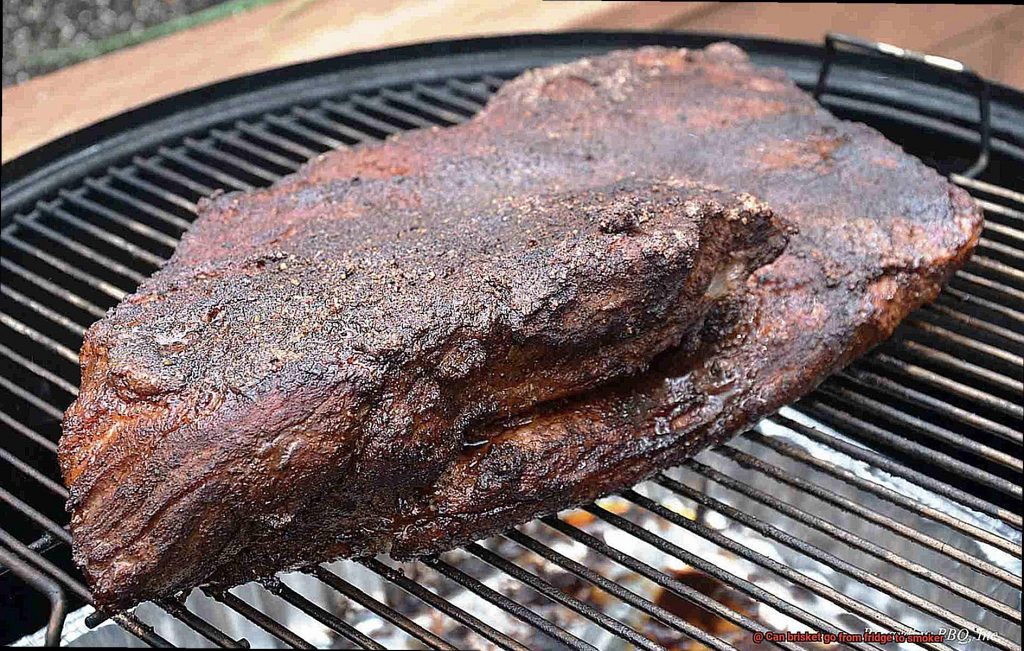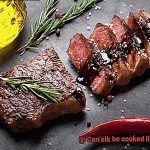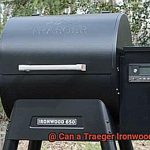Ready to fire up the smoker and sink your teeth into some lip-smacking brisket? Look no further. You’re probably wondering if you can grab that brisket straight from the fridge and throw it on the smoker. Well, wonder no more. In this blog post, we’ll dive into the nitty-gritty of preparing brisket for smoking and uncover whether it’s a good idea to go from fridge to smoker in one fell swoop.
Before you even think about igniting that smoker, it’s crucial to give your brisket some TLC. That means trimming off any excess fat, rubbing it down with your favorite seasoning, and letting it marinate for maximum flavor infusion. Once your brisket is all seasoned up, you might be itching to toss it onto the smoker right away. But hold your horses.
For a perfectly cooked piece of brisket, it’s recommended to let your meat come to room temperature before slapping it onto the smoker. This step ensures even cooking throughout and prevents the outer layers from drying out while the center remains undercooked. So while you might be tempted to skip this waiting game and go straight from fridge to smoker, a little patience goes a long way in achieving that juicy tenderness we all crave.
To bring your brisket up to room temperature, simply take it out of the fridge and let it chill on the kitchen counter for around 30 minutes to an hour. This time can also be used to preheat your smoker, saving precious minutes once that beautifully seasoned hunk of meat is ready to hit the heat.
And there you have it – the simple process of transitioning brisket from fridge to smoker. So while cutting corners may seem tempting in our fast-paced world, taking that extra bit of time will make all the difference in achieving barbecue perfection. Now that you’re armed with this knowledge, get ready to impress friends and family with your tantalizing smoked brisket skills.
Contents
What is Brisket?
Brisket, a tantalizing cut of meat that embodies barbecue excellence, demands meticulous preparation and cooking techniques to unlock its tender and flavorful glory. A common dilemma among brisket enthusiasts revolves around whether it is safe and advisable to transition directly from fridge to smoker without allowing the meat to reach room temperature. In this comprehensive guide, we venture into the debate, offering valuable insights on mastering the art of brisket from start to finish.
Safety First:
When it comes to food safety, proper handling of raw meat is paramount. The USDA recommends storing perishable foods, including raw brisket, below 40°F (4°C) to prevent bacterial growth. When taken straight from the fridge, the internal temperature of the brisket generally falls within this safe range. However, we must strike a balance between safety precautions and achieving optimal cooking results.
The Case for Room Temperature:
While it may be tempting to transfer the brisket directly from the fridge to the smoker, allowing it to reach room temperature beforehand presents significant advantages. Allowing your brisket to sit at room temperature for approximately 30 minutes to an hour enhances both the cooking process and the final outcome.
Even Cooking:
Introducing a cold brisket directly into a hot smoker can result in uneven cooking. The exterior may cook rapidly while the center remains undercooked, raising concerns about food safety. Allowing your brisket to reach room temperature guarantees more uniform cooking throughout, yielding a flawlessly cooked piece of meat.
Enhanced Flavor and Texture:
Bringing your brisket to room temperature prior to smoking elevates its flavor and texture to new heights. Starting with a room-temperature cut allows for more even cooking, thereby preserving moisture in the meat. This translates into a succulent and tender end product that will leave your taste buds dancing with delight.
Mastering the Art of Brisket: The Step-by-Step Approach:
- Remove your brisket from the fridge and let it sit at room temperature for 30 minutes to an hour.
- Utilize this time to prepare your smoker and gather your preferred seasonings.
- Once the brisket has reached room temperature, generously apply your chosen rub or seasoning to all sides of the meat.
- Place your perfectly seasoned brisket in the preheated smoker, ensuring a steady cooking temperature of approximately 225°F (107°C).
- Allow the brisket to cook low and slow until it reaches an internal temperature of around 195°F to 205°F (90°C to 96°C).
- Once cooked, remove the brisket from the smoker and let it rest for at least 30 minutes before slicing against the grain. Savor each delectable bite.
Food Safety Considerations
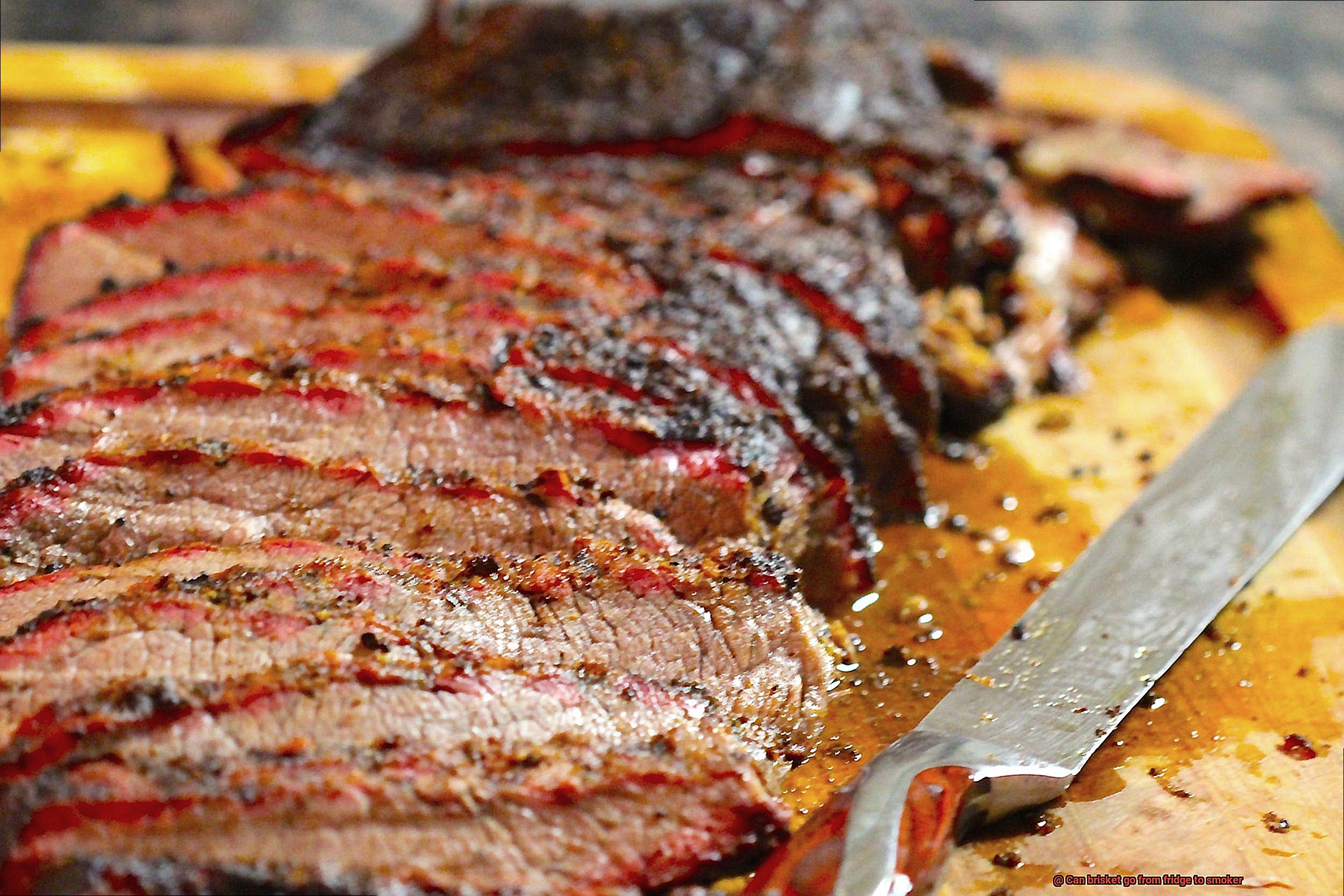
Food safety considerations are crucial when it comes to preparing and cooking food, especially when it involves meats like brisket. To ensure that your meals are both mouthwatering and safe to eat, there are several important factors to consider.
First and foremost, understanding the temperature danger zone is essential. Bacteria thrive between 40°F (4°C) and 140°F (60°C), making it vital to avoid exposing your brisket to this danger zone. When you take a brisket out of the refrigerator and let it sit at room temperature, it can quickly enter this range, providing an ideal breeding ground for harmful bacteria.
To prevent this food safety nightmare, it is best to thaw your brisket in the refrigerator beforehand. Thawing in the fridge allows for a controlled process, with the cold temperature inhibiting bacterial growth. However, keep in mind that depending on the size of your brisket, it can take up to 24 hours per 5 pounds of meat to thaw properly. Planning ahead is key.
If time is of the essence, you can opt for the cold water thawing method. Simply place your brisket in a leak-proof plastic bag and submerge it in a sink or large container filled with cold water. Remember to change the water every 30 minutes to maintain its cold temperature. But beware. This method requires constant monitoring and should be completed within two hours.
It is crucial to never thaw your brisket at room temperature or using hot water. These methods create conditions that bacteria absolutely adore, putting you at serious risk of foodborne illnesses. Let’s steer clear of those, shall we?
Once your brisket is safely thawed, proper handling is key to preventing cross-contamination. Always wash your hands thoroughly before and after handling raw meat, and use separate cutting boards and utensils for raw and cooked foods. We don’t want any unwanted guests crashing our grilling party.
When it’s time to transfer your brisket from the fridge to the smoker, maintaining proper temperature control is essential. Preheat your smoker to the desired temperature before placing the brisket inside. Aim for a smoker temperature of 225°F (107°C) to 250°F (121°C) for that perfectly cooked, juicy brisket.
To ensure your brisket is fully cooked and safe to devour, use a meat thermometer to check the internal temperature. The thickest part of the brisket should reach a minimum internal temperature of 145°F (63°C) for medium-rare or 160°F (71°C) for medium doneness. However, if you want that tender, melt-in-your-mouth brisket experience, most recipes recommend cooking it to an internal temperature of 195°F (90°C) to 203°F (95°C).
Uneven Cooking When Going From Fridge to Smoker
However, with a few pro tips, you can ensure that your brisket comes out evenly cooked and mouthwateringly delicious every time.
The first step in achieving even cooking is to let your brisket come to room temperature before placing it in the smoker. This may take about an hour or two, depending on the size of your cut. Allowing the meat to warm up slightly helps it cook more evenly throughout.
Next, consider utilizing a two-step cooking process. Start by placing your brisket in a low-temperature environment, such as an oven set at 275°F or a lower heat setting on your smoker. Let it cook slowly for a couple of hours to gradually warm up. This initial phase ensures that the heat penetrates the meat evenly, preventing uneven cooking.
After the low and slow phase, it’s time to crank up the heat. Increase the temperature on your smoker or transfer the brisket directly onto the grill grates if you’re using charcoal or gas. This step helps develop a beautiful bark on the outside while continuing to cook the interior to perfection.
To guarantee that you hit the sweet spot of doneness, make sure to use a meat thermometer. Insert it into the thickest part of the brisket and monitor the internal temperature like a pro pitmaster. This way, you can avoid overcooking or undercooking and achieve that juicy, tender result you’re after.
Once your brisket has reached its desired internal temperature, resist the temptation to slice into it right away. Resting is key. Allow your brisket to rest for at least 15-30 minutes before diving in. This resting period allows the juices within the meat to redistribute, resulting in a moist and tender final product.
Benefits of Letting Brisket Come to Room Temperature
Letting brisket come to room temperature before smoking it has numerous benefits that can elevate your culinary prowess and leave your taste buds rejoicing. By simply allowing this meaty masterpiece to bask in the ambient warmth, you can achieve a symphony of flavors and textures that will have your guests raving.
- Even Cooking: Cold meat is notorious for its uneven cooking tendencies. Placing a chilled brisket onto a scorching hot smoker can lead to a parched exterior and an undercooked interior. However, by granting your brisket the luxury of room temperature, you provide it with a head start towards a harmonious, evenly cooked masterpiece.
- Reduced Cooking Time: Patience may be a virtue, but who wouldn’t want their succulent brisket ready a little sooner? Cold meat requires more time to cook than its room temperature counterpart. By allowing your brisket to warm up before it hits the smoker, you can shave off precious minutes or even hours from your cooking time, ensuring swift gratification.
- Enhanced Smoke Absorption: The captivating allure of smoke is what transforms smoked meats into culinary treasures. However, cold meat has a tendency to contract when faced with the heat of the smoker, making it challenging for those alluring smoke particles to penetrate the surface. By coaxing your brisket to embrace room temperature, you grant its surface the opportunity to relax and welcome the flavorful embrace of smoke.
- Tender and Juicy Delight: Tough and dry brisket? Not on our watch. Cold meat tends to be unyielding, while warmer meat exudes tenderness and succulence. Allowing your brisket to luxuriate in room temperature glory before smoking can work wonders in breaking down connective tissues, resulting in a tender and juicy end product that will have everyone clamoring for seconds.
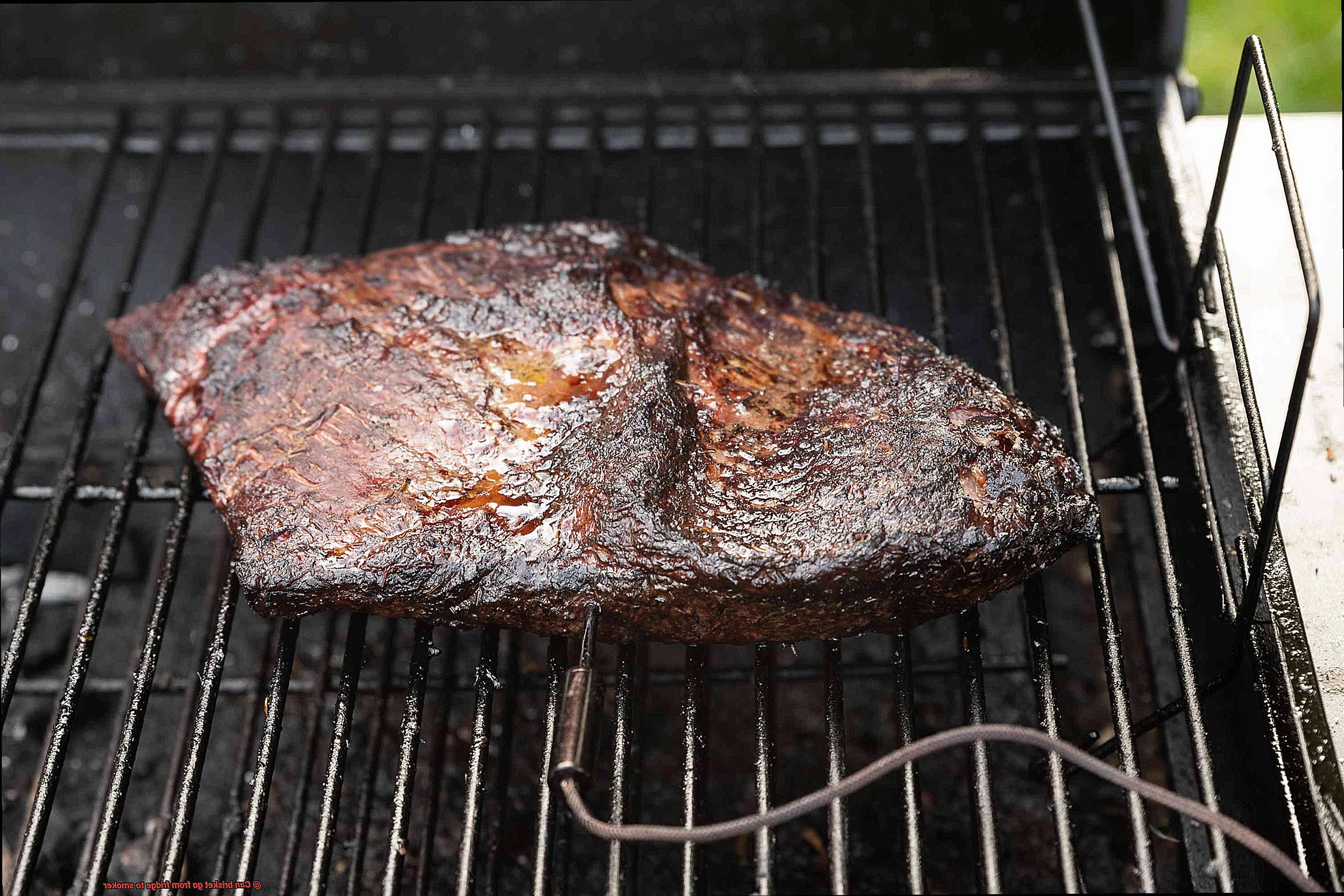
While the benefits of letting brisket come to room temperature are undeniable, it is crucial to prioritize food safety. To avoid the risk of bacterial growth, brisket should not be left at room temperature for more than two hours. Aim to let your brisket revel in room temperature bliss for approximately 30 minutes to an hour before embarking on its smoky journey.
How Long Should You Let the Brisket Sit?
Imagine the anticipation of preparing the perfect cut of brisket, seasoning it with care, and now it’s time for the magic of smoking to begin. But how long should you let the brisket sit? In this article, we’ll explore the optimal resting time for that mouthwatering brisket, taking into consideration various factors that can influence the process. Get ready to master the art of resting and elevate your brisket to a whole new level.
The Science Behind Resting:
Resting a brisket is not just a matter of impatience; there is actually science behind it. When you allow the brisket to rest, it undergoes carryover cooking, where the internal temperature continues to rise even after removing it from the heat source. This ensures that the meat cooks evenly and retains its juiciness. Furthermore, resting allows the juices to redistribute throughout the meat, resulting in a moist and flavorful end product.
General Guideline:
As a general rule of thumb, let the brisket sit at room temperature for approximately 1 hour per pound of meat. This resting time allows for carryover cooking and gives the juices enough time to redistribute evenly. However, keep in mind that this is just a guideline – factors such as size, cooking method, and personal preference may influence the resting time.
Food Safety:
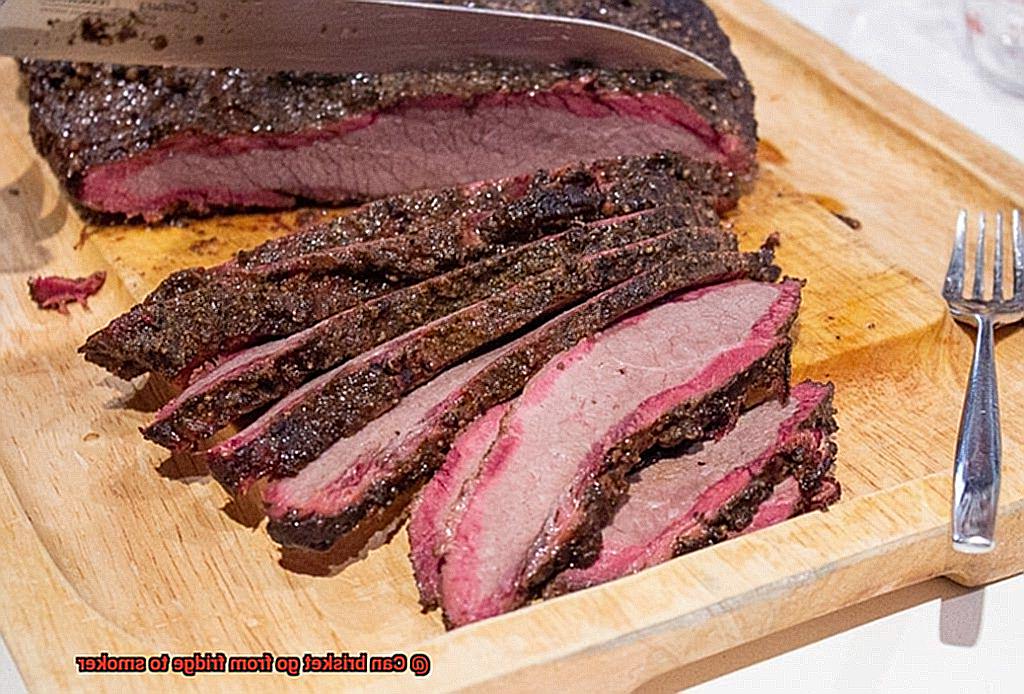
While it is crucial to allow ample resting time, we must prioritize food safety. Leaving the brisket at room temperature for too long can create an environment conducive to bacterial growth. To avoid this risk, make sure not to exceed the recommended resting time and ensure proper chilling when necessary.
Chilling Before Smoking:
If you’re not planning to immediately smoke the brisket after removing it from the refrigerator, keep it chilled until you’re ready. Wrap it tightly in plastic wrap or aluminum foil and place it back in the fridge. However, don’t forget to allow enough time for the brisket to come back to room temperature before smoking.
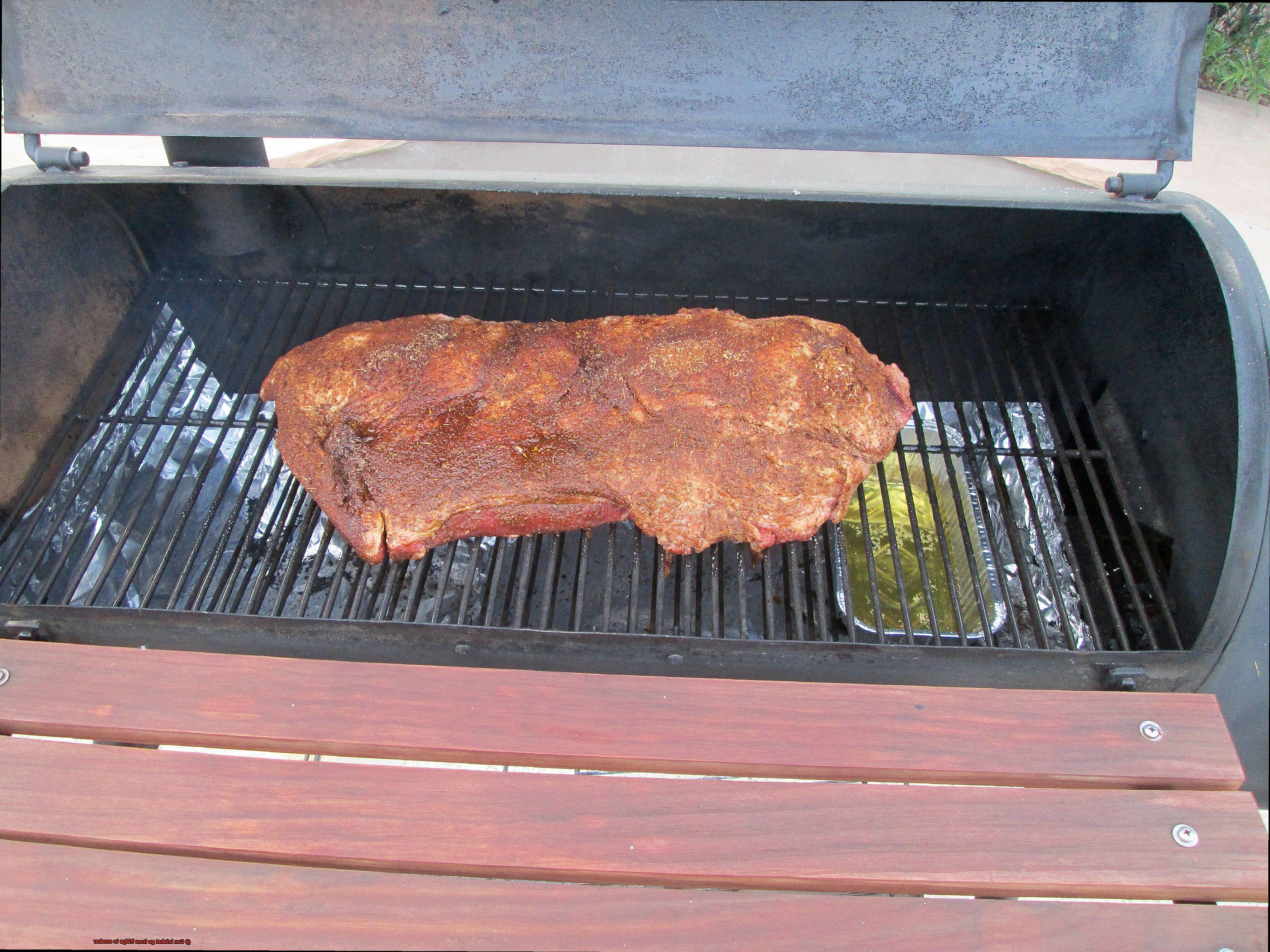
Tips for Bringing the Brisket to Room Temperature
Smoking a brisket is a labor of love that requires time, patience, and attention to detail. One crucial step in achieving a perfectly cooked brisket is bringing it to room temperature before placing it in the smoker. In this blog post, we’ll explore why this step is important, the best methods for doing so, how long you should wait before smoking, tips for safely bringing the brisket to room temperature, and how to tell when it’s ready.
Why is it important to bring the brisket to room temperature?
Brisket is a tough cut of meat that benefits from slow cooking to become tender and flavorful. By allowing the brisket to come to room temperature, you ensure more even cooking. This prevents a dry exterior and undercooked interior, resulting in a juicy and perfectly cooked brisket.
What are the best methods for doing so?
To bring the brisket to room temperature, remove it from the fridge at least one hour before smoking. This allows the internal temperature of the meat to increase slightly and promotes even cooking. If you’re short on time, try the “reverse sear” technique by starting the brisket in a low-temperature oven and then transferring it directly to the smoker.
How long should you wait before smoking?
It’s recommended to let the brisket sit at room temperature for about 1-2 hours before smoking. This timeframe allows enough time for the meat to warm up without reaching unsafe temperatures that can promote bacterial growth.
What are some tips for safely bringing the brisket to room temperature?
To ensure food safety, don’t leave the brisket at room temperature for more than two hours. Use a wire rack or baking sheet to allow air circulation around the meat, helping it come to room temperature more quickly and evenly.
How can you tell when the brisket is at room temperature?
A quick way to determine if the brisket has reached room temperature is by touching it. If it no longer feels cold to the touch and is closer to room temperature, then it’s ready to be smoked.
Additional Tips for Smoking Brisket
Smoking brisket is a delicious and rewarding experience that can impress your family and friends. To ensure a mouthwatering outcome, it’s important to keep a few additional tips in mind. From properly trimming the brisket to slicing against the grain, these expert tips will help you become a brisket smoking pro.
Trim it Right:
Before you even think about lighting up the smoker, give your brisket some tender loving care by properly trimming it. This isn’t just about aesthetics – removing excess fat and silver skin allows for better smoke penetration and seasoning absorption. It’s like giving your brisket a makeover before it hits the grill. Plus, it ensures that each bite is perfectly balanced with flavor and tenderness.
Rub or Marinade Magic:
Flavor is the name of the game when it comes to smoking brisket. Don’t just settle for ordinary – use a good quality rub or marinade to elevate your meat to new heights. Apply the rub generously and let it work its magic for a few hours before smoking. This allows the flavors to penetrate deep into the meat, creating a mouthwatering bark on the outside. It’s like giving your brisket a flavorful hug that will leave everyone craving more.
Consistent Temperature is Key:
When it comes to smoking brisket, consistency is key. Maintaining a steady temperature throughout the smoking process is crucial for achieving tender and juicy results. Low and slow is the mantra, with a recommended temperature of around 225°F (107°C). This slow cooking ensures that every ounce of flavor is infused into the meat, resulting in a melt-in-your-mouth experience. It’s like slow-dancing with your brisket, taking it on an unforgettable journey towards perfection.
Wood Chips for that Smoky Goodness:
To achieve that signature smoky flavor, don’t forget the wood chips. Selecting the right wood chips can take your brisket to new heights of deliciousness. Hickory, mesquite, and oak are popular choices that infuse your meat with mouthwatering aromas. Soak the chips in water for 30 minutes before adding them to the smoker – this creates a steady stream of smoky goodness that will have your taste buds dancing with delight. It’s like adding a secret ingredient that unlocks a whole new level of flavor.
Slice Against the Grain:
When it’s time to showcase your perfectly smoked brisket, don’t forget the importance of slicing against the grain. This simple technique can make all the difference in achieving optimal tenderness. By cutting against the grain, you break up tough muscle fibers and allow each bite to be tender and succulent. Use a sharp knife and slice perpendicular to the lines running across the surface of the meat – this guarantees those melt-in-your-mouth slices that will have everyone coming back for seconds. It’s like unlocking the secret to ultimate tenderness and satisfaction.
JTVVfsSeZ84″ >
Conclusion
Yes, you can absolutely take your brisket straight from the fridge to the smoker. It’s a convenient and time-saving method that many barbecue enthusiasts swear by. By starting with a cold brisket, you allow the smoke to penetrate the meat more effectively, resulting in a rich and flavorful end product.
But there are a few things to keep in mind when using this approach. First, make sure your brisket is properly thawed if it was frozen. You don’t want any frozen spots that could affect the cooking process or result in unevenly cooked meat.
Next, give your brisket some time to come up to room temperature before placing it on the smoker. This allows for more even cooking and ensures that the outer layer doesn’t get overcooked while waiting for the center to catch up.
When you’re ready to start smoking, be sure to preheat your smoker to the desired temperature before adding the brisket. This helps maintain a consistent cooking environment and prevents any sudden temperature drops that could impact the cooking time.
Once your smoker is preheated and your brisket has reached room temperature, it’s time to place it on the grates and let the magic happen. Keep an eye on the internal temperature of the meat throughout the smoking process, aiming for an internal temperature of around 195-205°F for optimal tenderness.
Remember, patience is key when smoking brisket. It’s a low and slow cooking method that requires time and attention. Resist the urge to constantly check on your meat or rush through the process – good things come to those who wait.
In conclusion, yes, you can confidently take your brisket straight from the fridge to the smoker. Just ensure proper thawing, allow it to come up to room temperature, preheat your smoker, and embrace the slow cooking process.

